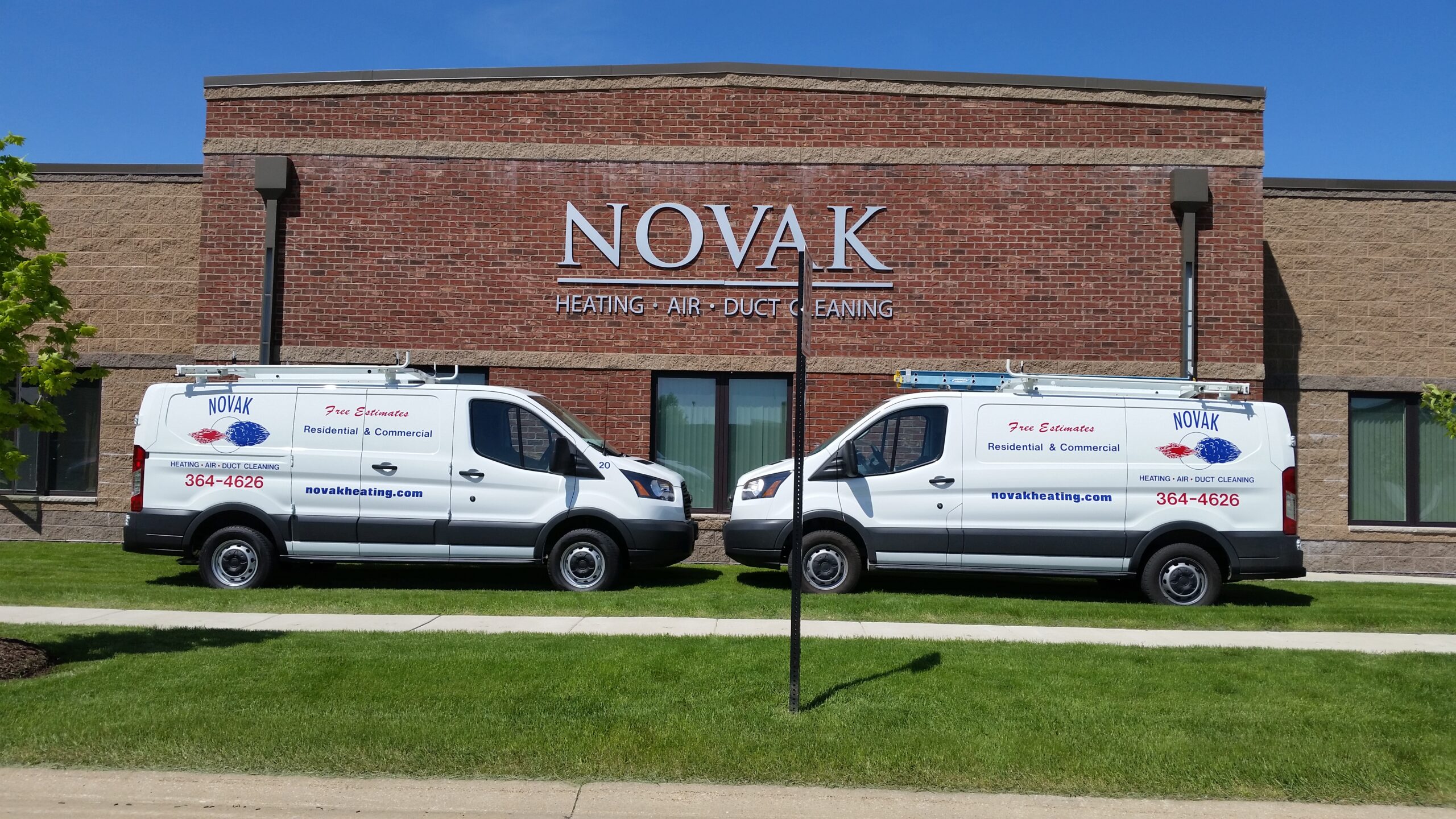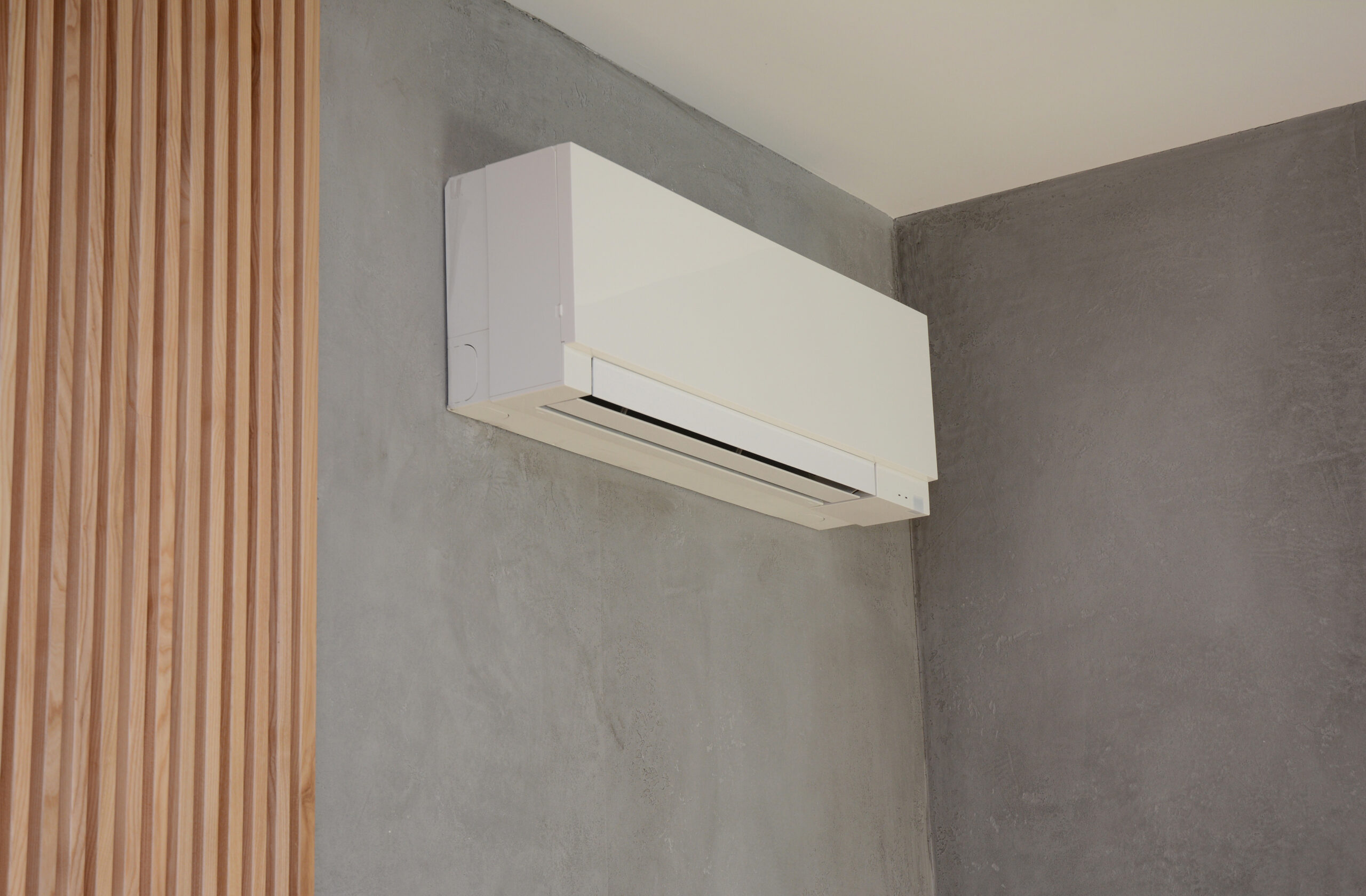You walk into a friend’s house, but instead of seeing vents on the floors and walls, you see these big long boxes. This box is a ductless mini-split. Houses that have ductless mini splits don’t need ductwork to cool or heat a space. Your friend may have indoor air handling units all over their house, but only one outdoor unit. You might be wondering how they’re all connected and how they can create comfortable temperatures in independent spaces. Novak answers all your ductless system questions in this blog.

What Is a Ductless Mini-Split System?
First, let’s define what a ductless mini-split system is. These systems consist of an outdoor heat pump unit and one or more indoor air handling units that distribute air throughout your home or business. Unlike traditional heating and cooling systems that rely on ductwork to deliver air, mini-split systems use air handlers directly installed in living spaces to deliver conditioned air.
Even though they provide air on demand given the temperature settings on each indoor air handling unit, they are all connected. The outdoor unit is connected to the indoor unit via a refrigerant line, a conduit containing electrical wiring and tubing. The outdoor heat pump unit houses the compressor and other key components, while the indoor unit contains the evaporator and air handler.
One of the great advantages of ductless mini-split systems is that they provide zoned heating and cooling. This means you can have individual temperature control in each room or zone where an indoor unit is installed. Each indoor unit has its own thermostat, allowing you to create customized temperature settings to meet your family’s or business’s needs.
Determining the Right Layout for Your Mini-Split System
Now, let’s talk about how to figure out the number of mini splits and heat pumps you would need to cover your entire home. It’s important to note that the number of indoor air handlers required will depend on your home’s size, layout, and insulation. A professional HVAC technician can help you determine how many mini-splits you’ll need to properly heat and cool your home.
As a general rule of thumb, each outdoor unit can support 4 to 6 indoor units, depending on the model. The cooling capacity of each indoor unit will depend on its BTU sizing, which means the amount of heating or cooling it can produce in one hour’s time. Your HVAC technician can also assist you in creating effective heating and cooling zones, as well as sizing indoor units to the proper capacity.
When it comes to choosing a ductless mini-split system, there are a few things to consider. First, you’ll need to decide between a single-zone or multi-zone system. Single-zone systems are ideal for smaller homes or businesses with a single space to cool or heat. Many people opt for these systems in newly finished spaces like basements, attics, or sunrooms. However, some people use them for areas separate from the rest of their HVAC systems like garages, guest houses, workshops, or new additions. Multi-zone systems, on the other hand, are more suitable for larger homes or businesses with multiple rooms or zones to control.
Next, you’ll need to choose the right size and type of heat pump for your system. A heat pump provides the heating and cooling functions of the unit. It’s important to choose a heat pump that is appropriately sized for your system. Too small of a heat pump won’t adequately cool your home, while too large of a heat pump will short cycle and be inefficient.
Ductless Mini-Split Installation in Cedar Rapids, IA
Ductless mini-split systems are a great option for those looking for efficient and customizable heating and cooling in their homes or businesses. By minimizing energy loss through ductwork, mini-split systems can save you money on your energy bills and improve your indoor air quality. If you’re considering a ductless mini-split installation, contact Novak Heating & Air Conditioning today to schedule a consultation with one of our expert technicians.

